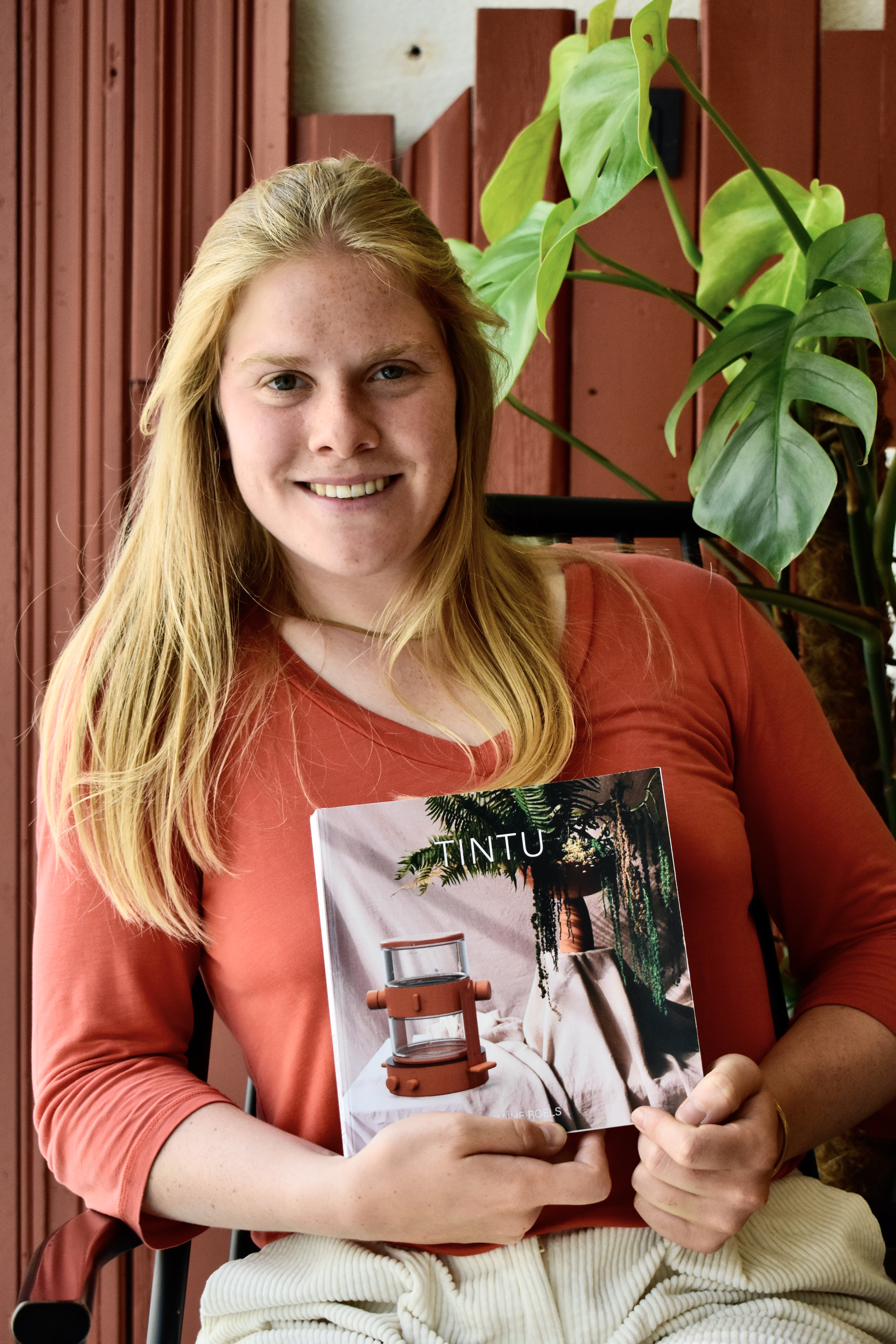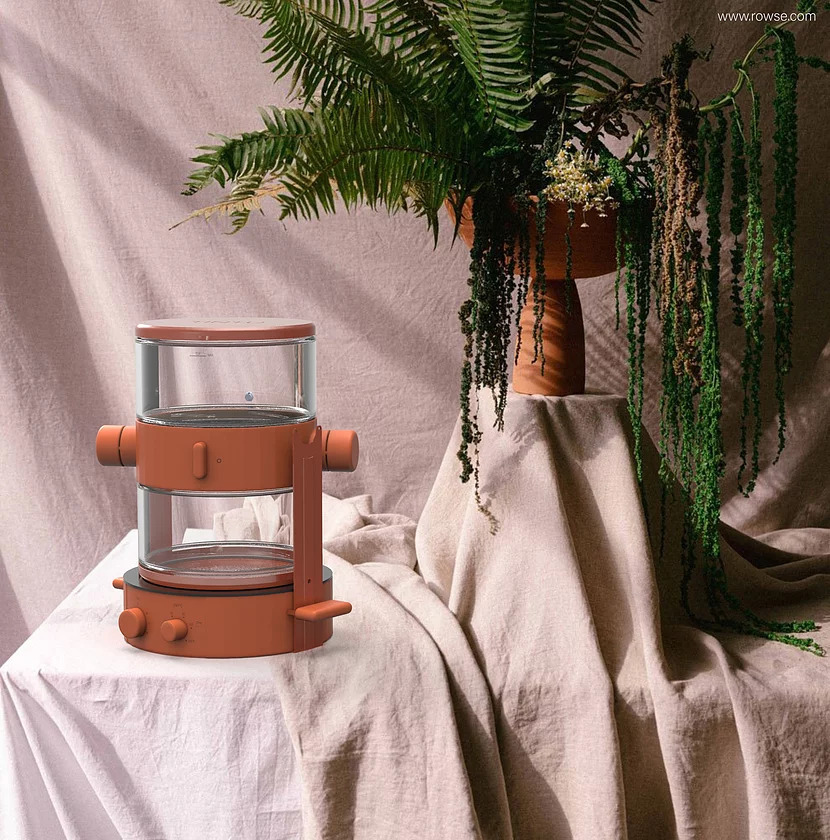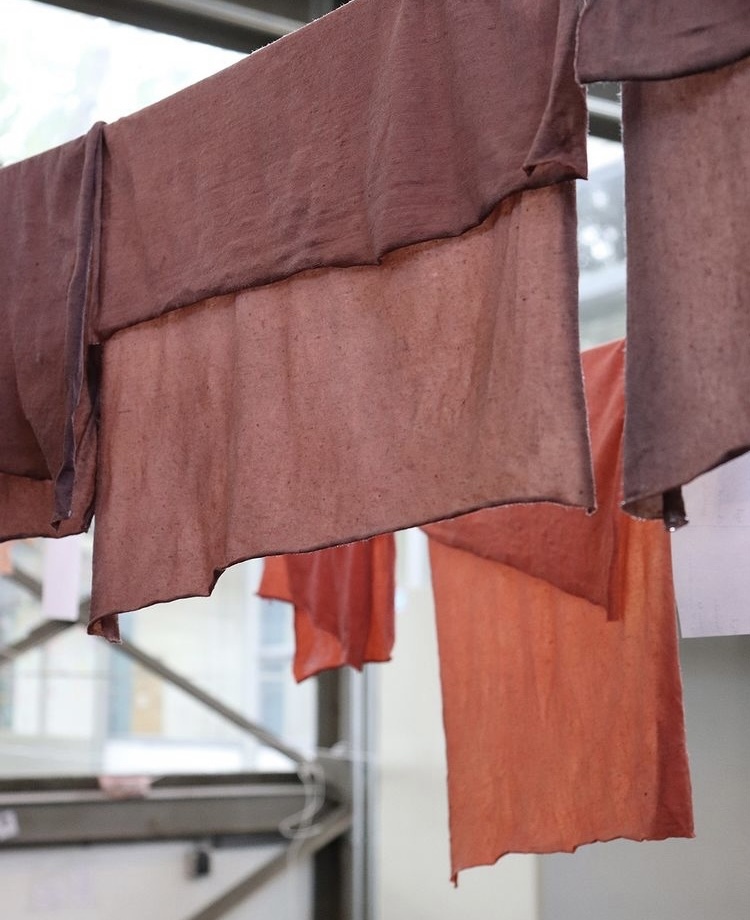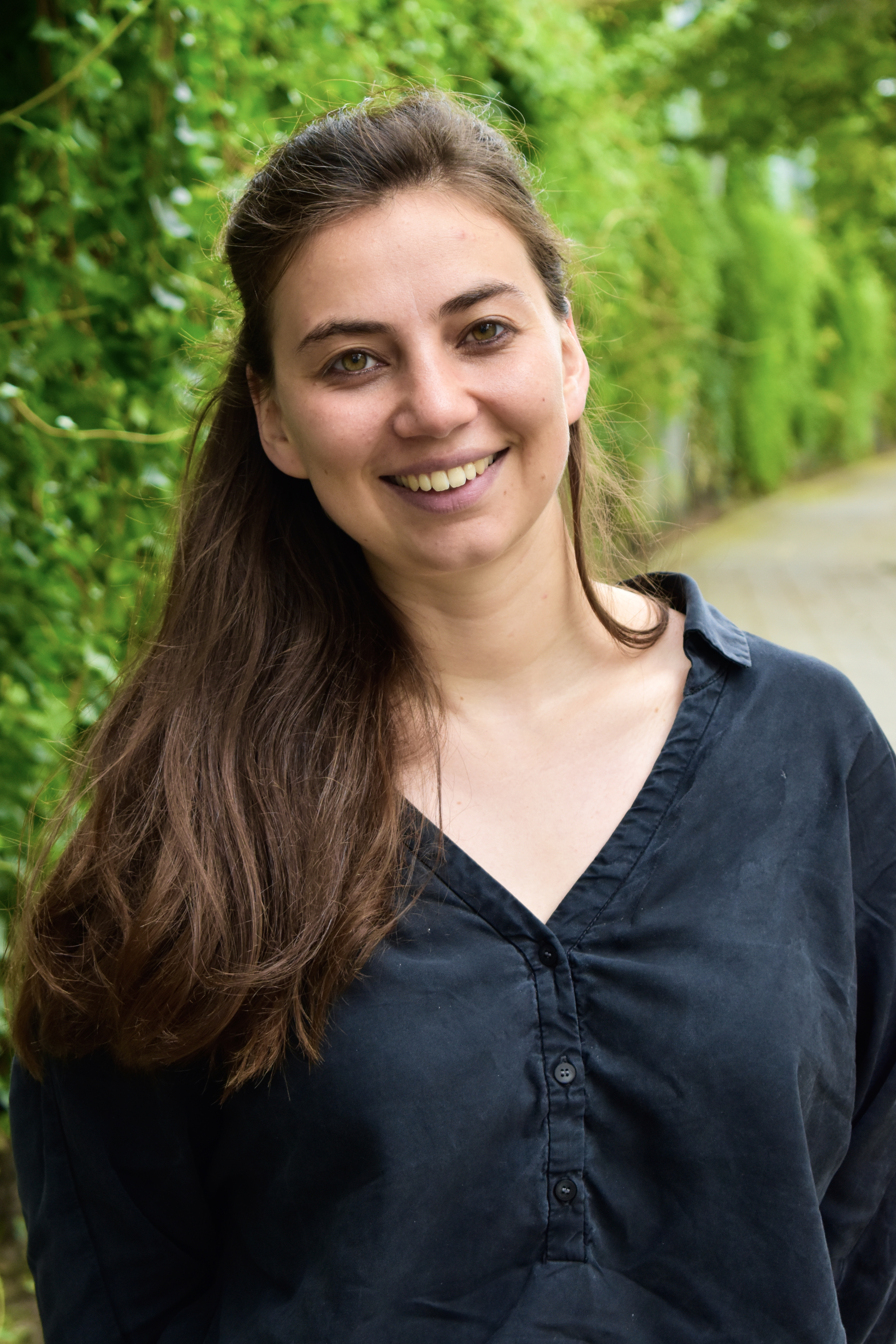
30 December 2025
5 New Year’s resolutions for a more sustainable wardrobe that are actually achievable
- Lifestyle
Nowadays, there are many alternatives to the polluting and chemical dyeing methods used in the fashion industry. For example, plant dyeing has returned. In addition, there are new and innovative alternatives for dyeing fabric and trims with, for example, CO2 or even bacteria.
Sustainable dyeing methods are more commonly used in smaller-scale production, though it is possible for larger production scales. Changing the fixed, fast and cheap dyeing process of the polluting fashion industry can be difficult. Want to read more regarding the effects of harmful dyes? Click here to read our previous blog post.
People are used to the constant colours they see in all shops, such as navy blue, classic red, leafy green and Dutch orange. Vegetable-based dyeing methods do not narrow the colour palette, though creating bright colours can be challenging with colours fading.
Natural dyes are only effective on natural textiles because each fibre type has its own unique structure. When dyeing with natural dyes, some dyes will adhere to different fibres better than others. We can dye blue cotton jeans with vegetable indigo or a linen blouse from avocado seeds or onion peel. Vegetable dyes also adhere well to animal fibres such as silk and wool.
Another possibility to dye natural and synthetic fibres is with bacteria or fungi, literally living colours! It is possible to extract colour pigments from biodegradable and human-friendly bacteria. The bacteria convert nutrients into pigments that can dye or grow on clothing, thus creating unique patterns. Laura Luchtman and Ilfa Siebenhaar researched the possibilities of bacteria in their research Living Colour and designed a collection dyed with bacteria for Puma.
A similar process can also apply to fungi. Ilse Kremer investigated the possibilities of dyeing with fungi in her graduation project, “Fabulous Funghi”. Together with the Westerdijk Fungal Biodiversity Institute, she developed a dyeing method. First, the fungi are grown. When the colour pigment is clearly visible, the fungi are dissolved in an agent. This kills the fungus and only the pigment remains, which you can use to dye textiles.. Dyeing with bacteria and fungi is a natural, eco-friendly way of dyeing clothes. At COSH! We think there is a lot of potential in this for the future!
Natural dyes do not work with synthetic fabrics such as polyester and nylon (polyamide). Therefore, other innovations have been developed to be able to dye without letting dyes escape to nature. For example, fibres can be dyed at an early stage, as in We aRe SpinDye® where colour pigments and recycled polyester are melted together. Dyecoo, where synthetic fibres are dyed using CO2 techniques. Other solutions are to re-use the dye bath repeatedly or to apply the pigment directly to the fibres so no dye residue remains. There are also techniques for sorting clothes by colour and then recycling them. The brand Loop a Life uses this technique for its clothing, and Reblend by Enschede Textielstad also works in this way.

Roua Atelier was founded by graphic artist and artist Roua ALHalabi. In her studio or on location, you can attend workshops to learn to dye clothes using natural dyeing methods. Roua Atelier also produces naturally dyed collections for brands.
Roua’s passion for natural textile dyeing developed as follows: “I come from a town in Syria where all the old ladies dye their own clothes, one of these amazing women is my grandmother. I remember her colourful hands when she was dyeing. I later got into the techniques while studying fine arts. When I came to the Netherlands and did an internship with natural dyes, I relived the feeling of when I was a young girl and knew for sure that this was my love.”
Roua uses natural pigments such as indigo, among others, and dyes with rosemarin, teas, flowers and food waste such as avocado seeds and onion peels. She cultivates, searches for, and develops these herself: “I focus on waste plants that can be found in kitchens, parks, forests and markets. But I also grow herbs and mushrooms.” During the shibori workshop (a Japanese dyeing technique to create patterns), you will get to work with natural indigo – the colour pigment also used for jeans.
Roua: “When I work with natural dye, I feel closer to Mother Nature, each colour has its own magic and charm. The smell of the dye bath and the transfer of the pigments warm my heart and new dye colours make me happy.”
Roua has more than seven years of experience in the textile dyeing industry. “I have made big advances in colour development. With different natural dyes and stain recipes, you can create astonishingly different colours (pastels and shiny shadows). It’s the magic of our earth.” But she is also aware of the challenges with natural dyeing: “Our raw materials are not durable, so the dye changes a lot. So I develop my pigments and recipes to manage this challenge. In addition, it takes a lot of water, which increases prices and not many companies can afford it.”
To optimize colour fastness as much as possible, Roua adapts her recipes to the dye and the textile fibre to be dyed. Roua: “There are many techniques to control colour washing and light techniques. I also work with chemical laboratories to check the results.”
Curious about how the dyeing process works? Would you like to attend a workshop or have a collection produced? Then get in touch with Roua Atelier.

Janne Roels obtained her master’s degree in collaborative and industrial design at the University of Antwerp with her thesis ‘TINTU’; she also worked for a few months as a student worker at COSH!, where she learnt more about the polluting side of the clothing industry.
TINTU is a cooking device with which you can make dyes for ink or clothing at home. “With food scraps or plants, you can make a concentrate to work with. Whereupon you can make a dye bath to dye clothes in.
Janne wants people who like to be ecologically minded and creative, an easy-to-use product so that they can enjoy dyeing. “When I discovered how many people on Instagram are recreational dyers, it opened up a whole new world for me. This inspired me because I saw how everyone was dyeing the ‘old-fashioned way’, with pots and pans on the cooker. I tried that myself once, making paint from avocado peels and pits. That was fun, but I thought: we can do it better and deliver a nicer product.

In the corona year, she took online courses on ink making, dyeing clothes and creating motifs with natural dyes. “This is how I learned how you can only use natural dyes on natural textiles such as cotton and wool, whilst each specific material will give a different colour result. For example, wool absorbs more dye than silk or cotton.” Tip from COSH! If you’ve warmed up to natural dyeing and want to work with felt and vegetable dyes yourself, be sure to attend a workshop at Katrien Perquy in Bruges!
If you have become enthusiastic about natural dyeing and want to work with felt and vegetable dyes yourself, then be sure to follow a workshop with Katrien Perquy in Brugge!
Janne sees a positive future for the clothing industry using natural dyes. “It’s healthier to wear on the skin and it’s unique. We are used to constant colour, but if people are open to the effect of natural dyes, natural changes and evolution of the colours used on their clothes, it can become big. In principle, natural dyes degrade slowly, yet with the correct knowledge, application, and care, they can remain beautiful for a long time. Maybe in the future, we can even go back to the shop to get our clothes re-dyed.”
Niki, the founder of COSH!, is happy that solutions like TINTU are being developed. “As we learn to deal with clothes that are naturally dyed, and the colour fades, it would be nice if there was someone in every community who could get started with re-colouring. TINTU can be a big help in this, and will become a much-needed tool on PEERBY, a website where you can borrow and rent stuff from your neighbours.”

Lotje Terra runs the BORO*ATELIER together with Lotje Terra, who set up the studio some five years ago with Celia Geraedts.
The BORO*ATELIER is a natural dye factory in Amsterdam with the mission to make the textile industry more social and sustainable. Here, we dye with pigments based on plants and minerals. It is also a social production workshop where a training programme is offered to long-term jobseekers and status holders to guide them towards paid employment.
As Lotje points out, few people think about the colours. “Usually, money and convenience keep fashion giants from using natural dyes and colouring methods. Big brands generally only use natural dyes in limited collections to make a one-off statement.” We’re used to things being too cheap, so we see more sustainable options as ‘expensive’. In addition, natural colours are not mainstream, they are unknown to many people. And while natural dyes have nice benefits to offer, Lotje says. “They look beautiful and the colours can have so much life! It’s sustainable because everything comes from nature. If the dyes ever returned to nature, they would pose no threat.”

Hanne Schatteman is a chemical civil engineer and is in the process of founding her own circular clothing brand. The plan is to dye clothes using supercritical CO2, which is a physical state between liquid and gas.
Hanne started her career at a chemical company but wanted to be involved in sustainability. “It’s time to apply more technology to the fashion industry, yet it is frustrating that little has happened yet.” The opposite diagram shows how the colouring method works. “In principle, you could give your clothes a different colour every season in this way.“
At COSH!, we are fans of this idea. In this way, you could enjoy the same clothes for longer and make sure they continue to fit your style. It fits well within the circular economy. Would you go to a centre where you can change the colour of your clothes if you don’t like the original colour anymore? Let us know!
Circular means that every part of a garment’s lifecycle is cyclical, so no raw materials are left unused from the beginning of production to when the garment has finished its life as a T‑shirt, for example. “I want to set up urban hubs where you can buy clothes, have them repaired, re-coloured and eventually hand them in so we can recycle them.” No toxic dyes end in the environment with Hanne’s chosen dyeing method. “We collect all excess dyes, which we can reuse later.”
She wants to take responsibility for the entire life of the garments of her future brand. “My concept is that you can have a yellow t‑shirt from June dyed blue, for example, when you’re tired of it. Or that you can change a long-sleeved shirt to a short-sleeved one when it gets cold. This way, a T‑shirt never ends up in the rubbish dump. If someone doesn’t want it anymore, we’ll recycle it. That’s easy to do because I will make the clothes from 100% recycled polyester and continue to recycle again and again”.
Polyester (both ‘new’ and recycled) is a synthetic fabric that you cannot colour with natural dyes because it does not absorb those dyes well. Supercritical CO2 could be a harmless alternative to the way polyester is dyed at the moment.
It’s difficult to picture our culture without rapid fashion. Fast fashion is clothing that rapidly copies trends, manufactured at the highest possible speed and the lowest cost to be sold, then swiftly in stores. Because the garments are frequently of inferior quality and the trends change quickly, fast fashion usually leaves the buyer’s wardrobe soon after purchase. It also means that colours can be trendy one minute and then vanish from the street scene the next. The bright green Zara trousers that many fashion-forward people ordered in the spring of 2021 are unlikely to be seen again in the spring of 2022.
It is a shame that the chemicals used in dyes for the various colours and the dyeing waste end up in the natural water streams. But it can do differently it. Consciously choosing colours that suit you, you would like for a long time, wearing clothes you have already have help to create a long-lasting wardrobe and is the most sustainable option. If a colourful trend comes along that you want to join, you can start by looking in second-hand shops. This way we use no new dyes for clothes and no more rivers have to be polluted. Your physical health needs to wash newly purchased clothes before wearing them to prevent harmful dyes from penetrating your skin.
When shopping, you can look for clothes that carry a GOTS, OEKO-TEX or Bluesign label, which are labels that include chemicals and dyes in the control and evaluation of products. The Global Organic Textile Standard (GOTS) also guarantees that the textile fibres are of organic origin and that the working conditions in which they make the clothes are OK. OEKO-TEX can only guarantee no harmful substances are in the final product. With the Bluesign certificate, they have used no chemicals in the production, no natural resources have been over-utilised, and the apparel is devoid of dangerous substances, ressponsibly managed, water, air pollution and waste water are reduced to the lowest possible ecological footprint and the safety of employees and consumers involved is guaranteed.
You can also look for undyed clothes. For example, the Dutch brand MUD Jeans has undyed light blue jeans and trousers that are dyed with natural dyes. Another tip is to buy clothes that are made locally in Europe or North America from the yarn to the finished product, because here they enforce strict rules on chemicals. Although the Belgian Hobokens PFOS story by 3M makes us question such statements.
Finally, it is still useful to look at the materials of clothing when you are in the shop. Indeed, with the techniques now used in the major fashion industries, more chemical dyes are always needed to dye synthetic fibres such as polyester than to dye natural or cellulose fibres. Make a conscious choice for clothing made from plant-based materials such as hemp, linen or (organic) cotton, preferably with a GOTS certificate that guarantees organic quality and sustainable and safe textile dyes.

While shopping, you can look for clothes that carry a GOTS, OEKO-TEX, Cradle to Cradle or Bluesign label, which are labels that include chemicals and dyes in the control and assessment of products. The Global Organic Textile Standard (GOTS) additionally guarantees that the textile fibres are of organic origin and that the working conditions in which the clothes are made are okay. OEKO-TEX only guarantees that no harmful substances can be found in the final product. With the Bluesign certificate, you can be sure that no harmful substances have been used in production, natural resources are managed responsibly, water, air pollution and wastewater are reduced for the lowest possible ecological footprint, and the safety of involved workers and consumers is guaranteed.
You can also look for undyed clothes, for instance Dutch brand MUD Jeans has undyed light blue jeans and trousers dyed with natural dyes. Another tip is to buy clothes made from yarn to finished product locally in Europe or North America as they enforce strict regulations on chemicals here. Although even the story of Belgian Hobokens 3M PFOS story makes us question such propositions.
Finally, it is still useful to look at the materials of clothes when you are in the shop. In fact, with the techniques now used in the major fashion industry, more chemical dyes are always necessary to dye synthetic fibres such as polyester than to dye natural or cellulose fibres. Consciously choose clothes made of plant-based materials such as Hemp, Linen or (Bio)cotton, preferably with GOTS certification that guarantees organic quality and sustainable and safe textile dyes.

30 December 2025

23 December 2025

12 December 2025